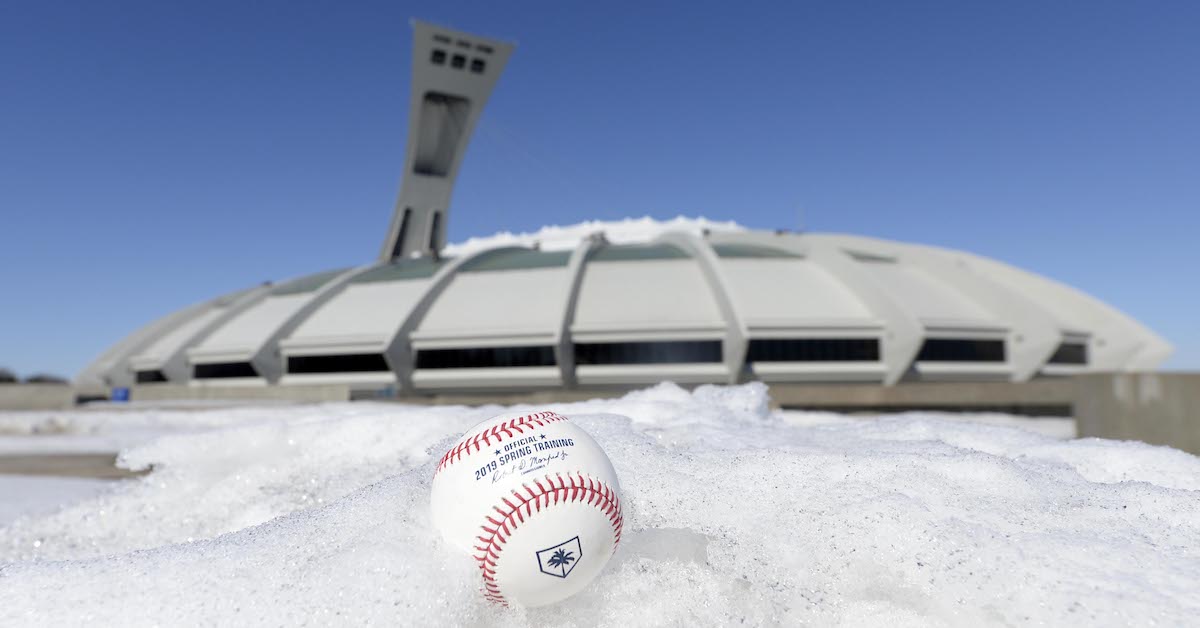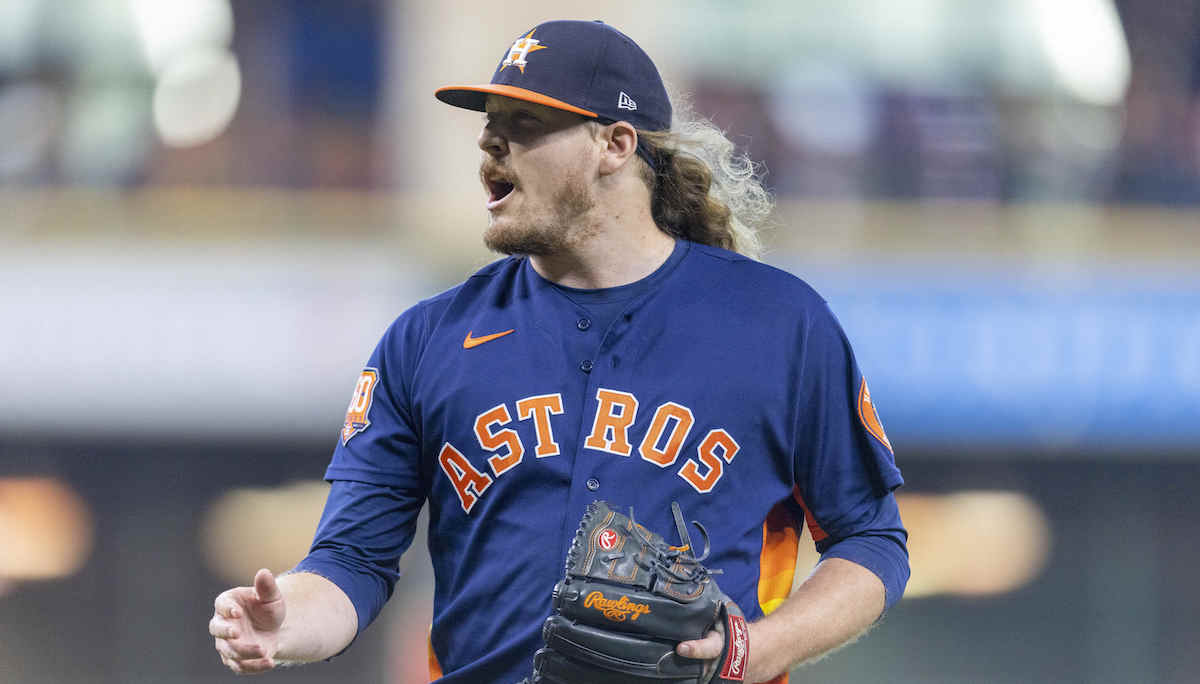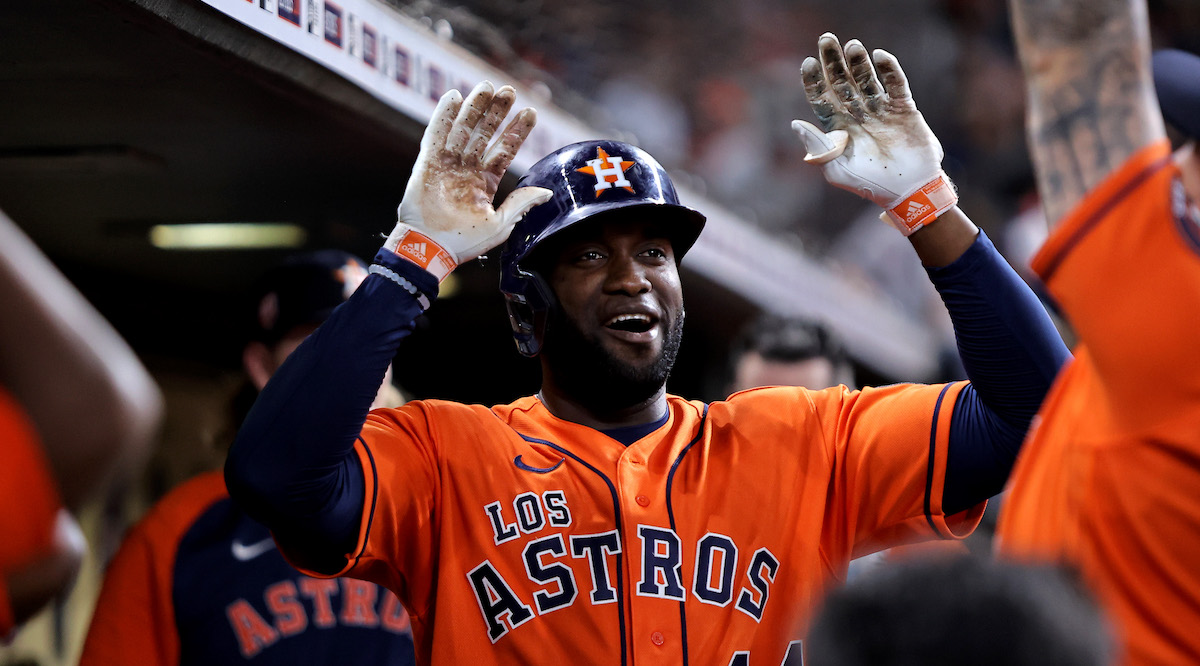Aaron Judge, Colossus of Clout

For a moment, it seemed like Aaron Judge might not reach 62 home runs. After hitting his 61st in Toronto last Wednesday, he fell into what counts as a slump for him these days: four games, two hits, and a handful of walks. After feeling inevitable for most of September, 62 suddenly felt tenuous.
What a foolish sentiment. Judge, as we’ve seen all year, is a home run machine. He’s an offensive machine, in fact, blowing away the rest of the league with the kind of performance not seen since Barry Bonds in his prime. Unlike most single-season home run chases, Judge’s season isn’t defined by a single round number. His offensive greatness is so robust, so all-encompassing, that treating this accomplishment as the crowning achievement of his season is unfair.
The single-season home run record in major league baseball is 73. It was set in 2001, by Barry Bonds. Sixty-one has a ring to it, of course, because it was the record for so long. It was also the American League and Yankee record, two marks that feel weighty even if they aren’t quite as impressive as “best of all time.” Plenty of the fanfare around Judge comes from the sheer rarity of seeing so many homers, but plenty also comes from the fact that some fans would prefer to ignore everything that happened from 1998 to 2001 and make the record 61 again.
I’m giving you permission to tune all of that out. Sixty-two home runs is cool regardless of what the all-time record is. Only six players have ever accomplished the feat of hitting 60 home runs, and you know all of their names: Bonds, Mark McGwire, Sammy Sosa, Roger Maris, Babe Ruth, and now Judge. That alone is mind-blowing; baseball has been around an impossibly long time, through periods of high and low scoring, and yet only six players have ever cracked 60 home runs in a year throughout it all.
Does that mean hitting 62 is anti-climactic? I’ll leave that interpretation up to you. But more so than any one increment – would it be special at 63? 65? – I’m impressed by how handily Judge has lapped the league today. Is it cool to pass Maris? Undoubtedly. If nothing else, now Judge’s future offspring can traipse around the country and opine about someone else’s homers hit in the far-off future. More pressingly, though, Judge has left the rest of baseball behind in a way not seen for many years.
Home runs aren’t hit in a vacuum. The majors go through home run droughts and booms for myriad reasons, including pitcher talent, park dimensions, pitching style, and baseball composition. It’s hard to say whether 2022 Judge or 1961 Maris hit under easier conditions, but one way to look at it is to consider how many home runs separate the major league leader from their closest challenger at the end of each season. By that standard, Judge is in impressive company. Here are the top 11 seasons (including a 10th place tie) by home run gap since the dawn of the 20th century:
| Year | Gap | Leader | Runner-Up |
|---|---|---|---|
| 1921 | 35 | Babe Ruth | Bob Meusel |
| 1920 | 35 | Babe Ruth | George Sisler |
| 1926 | 26 | Babe Ruth | Hack Wilson |
| 1928 | 23 | Babe Ruth | Jim Bottomley |
| 1924 | 19 | Babe Ruth | Jack Fournier |
| 1932 | 17 | Jimmie Foxx | Babe Ruth |
| 1919 | 17 | Babe Ruth | Gavvy Cravath |
| 2022 | 16 | Aaron Judge | Kyle Schwarber |
| 1933 | 14 | Jimmie Foxx | Babe Ruth |
| 1965 | 13 | Willie Mays | Willie McCovey |
| 1927 | 13 | Babe Ruth | Lou Gehrig |
First, yeah, that Babe Ruth guy was pretty good. Since the 1920s and ’30s, though, no one has done what Judge is doing. The only player to come close was Willie Mays, not exactly shabby company. Last year, Shohei Ohtani won an MVP by playing the way people think Babe Ruth did – pitching and hitting. This year, Judge is likely going to win an MVP by playing like Ruth actually did: with a ludicrous string of home runs that makes everyone else playing look like a weakling by comparison.
Even without that gap between Judge and Kyle Schwarber, though, this season would be an all-timer. The great arrow of baseball time points inexorably towards more uniformity and more talent. It’s a professional game; even the up-and-down bullpen arms and utility infielders of today work year-round at their craft, honing their bodies and minds in pursuit of fame and riches. In a sport where we measure success relative to a league baseline, that means it’s harder than ever to stand out.
This arc of progress isn’t some new phenomenon. Stephen Jay Gould, the late and celebrated biologist, wrote about it in 1986, though he framed it in terms of the extinction of .400 hitters. Standing out from the field simply gets harder with every generation because even the lesser lights of baseball now search for every possible edge.
To wit: wRC+, our marquee offensive statistic here at FanGraphs, considers a player’s production relative to his peers. A 150 wRC+ has no fixed statistical translation. It merely means that a player’s overall batting line is 50% better than the league as a whole. Judge’s mark – 208 heading into today’s action – means that he’s 108% better than the overall league.
In Ruth’s day, when dinosaurs walked the earth and many of baseball’s best players weren’t allowed to play in the same league as him, a 200 wRC+ wasn’t particularly uncommon. But as competition increased, players lapped the rest of the field less often. Ruth and Ted Williams each had career wRC+ marks that approached 200. Since 1972, though, there have only been nine individual seasons that eclipsed 200:
| Year | Player | wRC+ |
|---|---|---|
| 2002 | Barry Bonds | 244 |
| 2001 | Barry Bonds | 235 |
| 2004 | Barry Bonds | 233 |
| 2003 | Barry Bonds | 212 |
| 2022 | Aaron Judge | 208 |
| 1994 | Jeff Bagwell | 205 |
| 1994 | Frank Thomas | 205 |
| 1998 | Mark McGwire | 205 |
| 2020 | Juan Soto | 202 |
Jeff Bagwell, Frank Thomas, and Juan Soto all accomplished their feats in shortened seasons. Bonds – well, he’s Barry Bonds. That just leaves Judge and McGwire out of the last half-century. Heck, order every season by wRC+ and exclude Bonds, and that gives Judge the best single season relative to his peers since Williams (223) and Mickey Mantle (217) posted similarly absurd seasons in 1957.
If I had my druthers, that’s how Judge’s season would be remembered. Sixty-two home runs is neat, and I’m glad he got there. A 16-homer lead on the field is spectacular, the stuff that only long-forgotten icons of the game have ever even dreamed of. But putting together an offensive season that blows away the rest of the league to this degree, at a time when his peers are as good as they are? Goodness gracious. We probably won’t see another season like Aaron Judge’s 2022 in our lifetimes. Let’s appreciate it.









